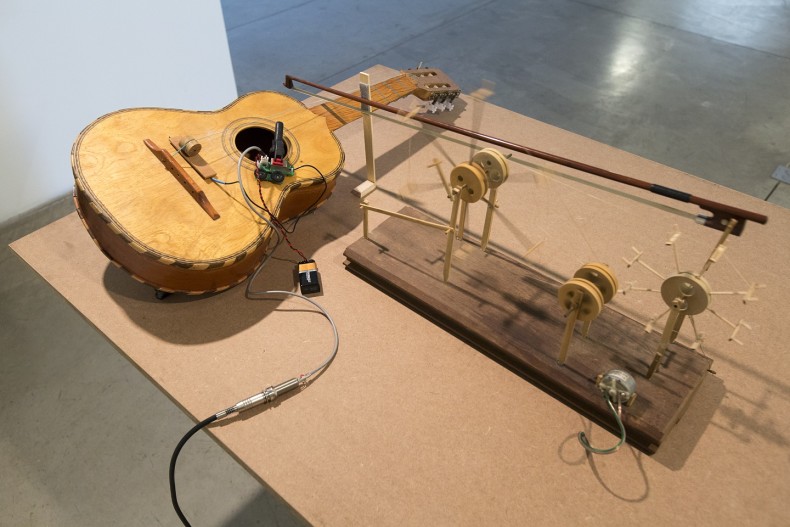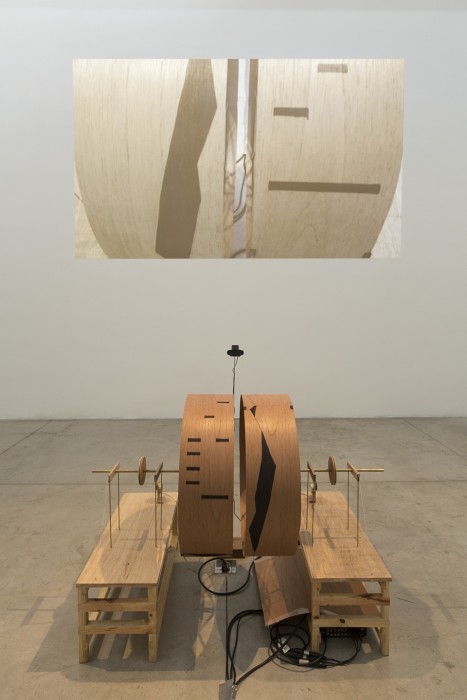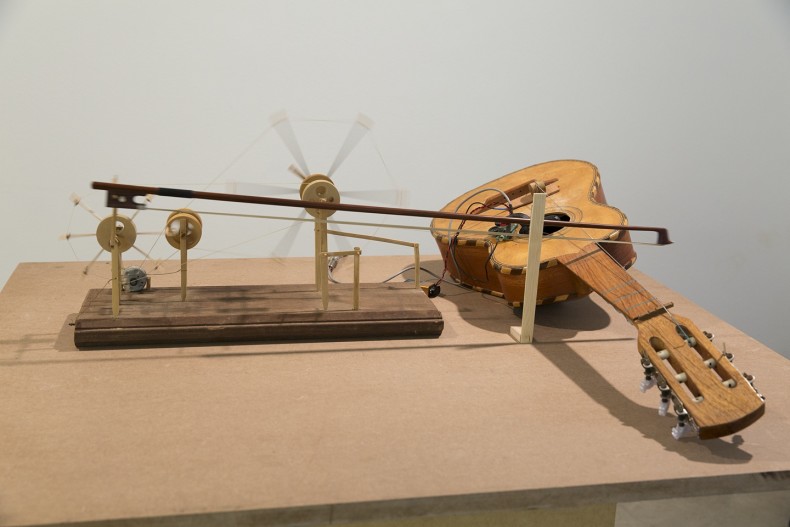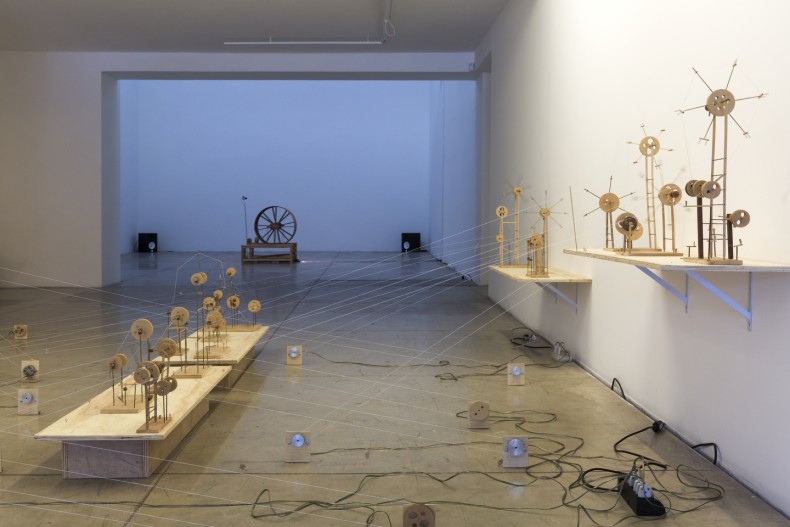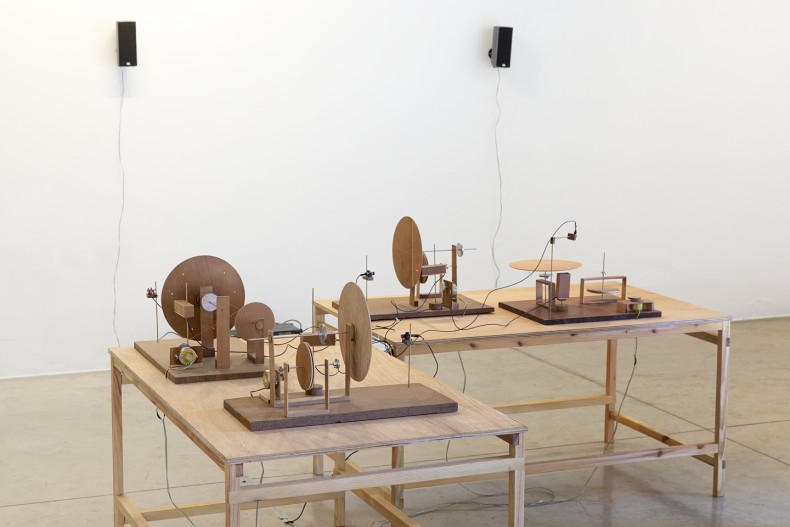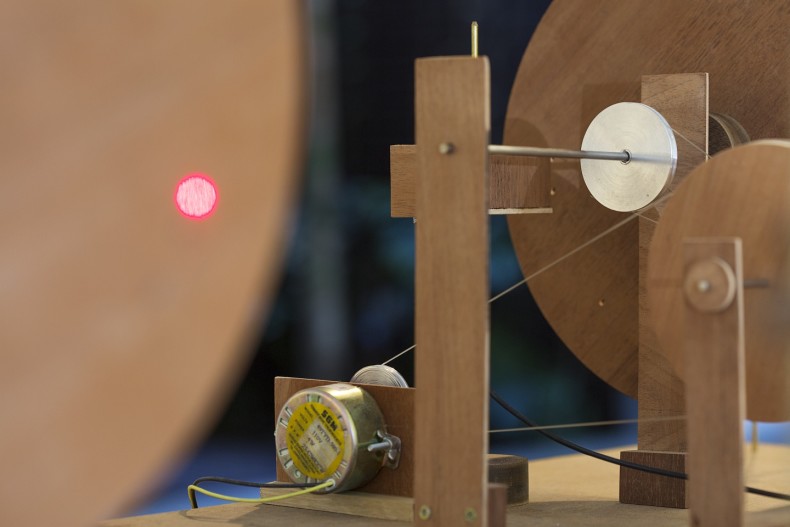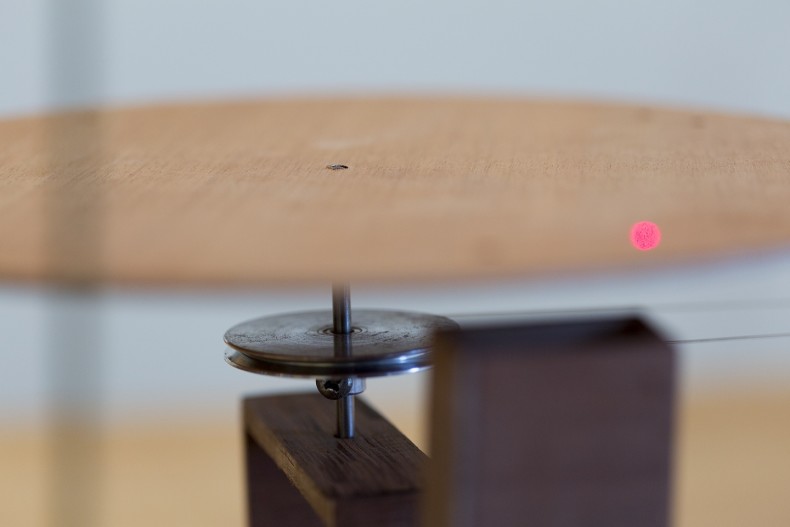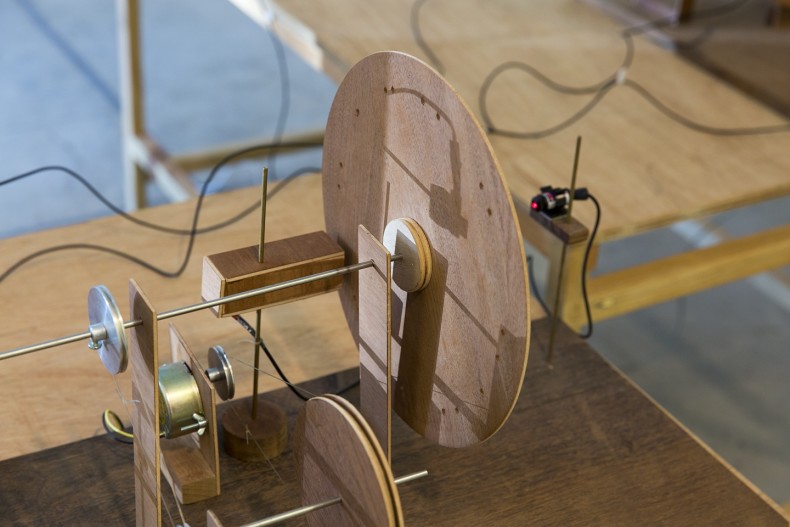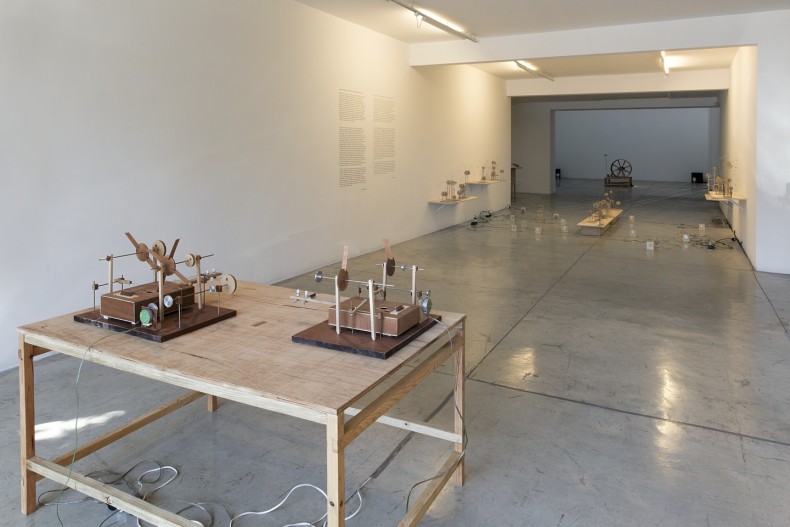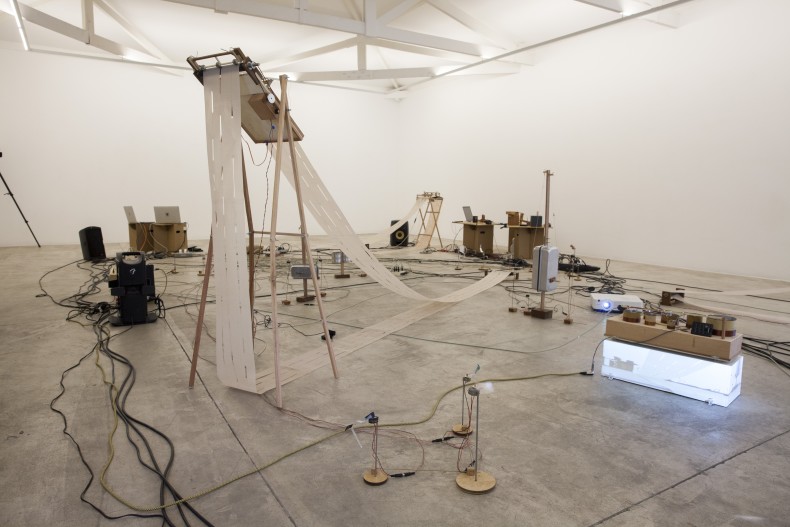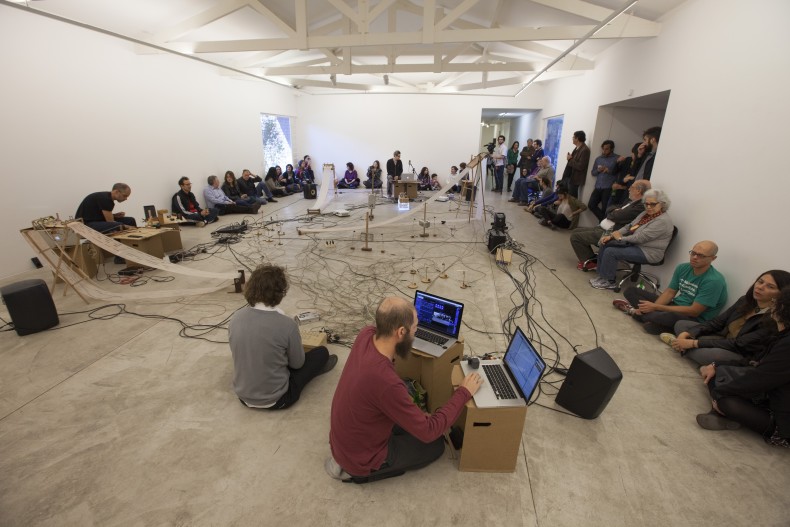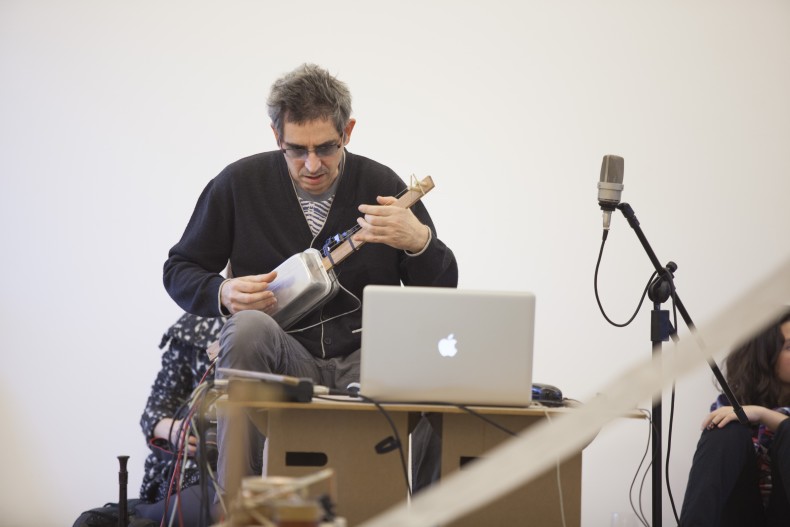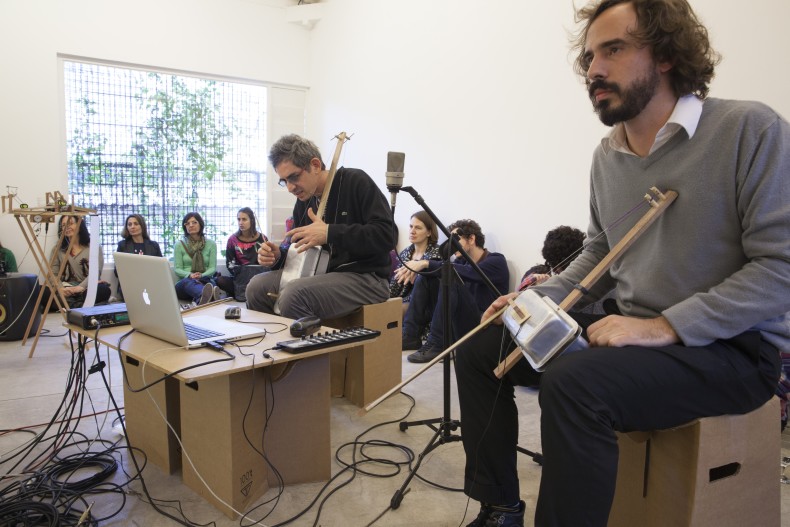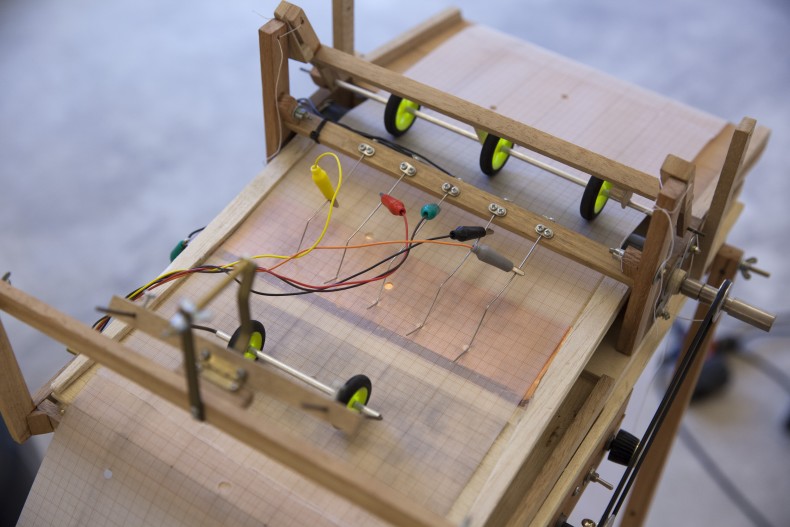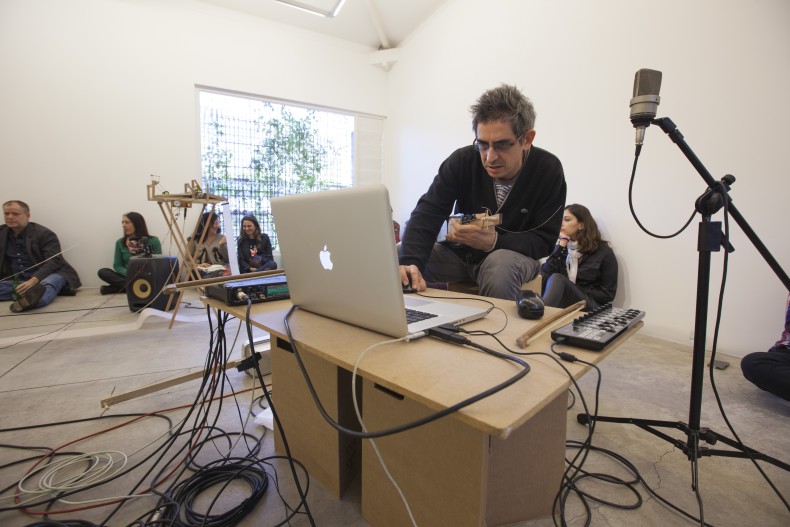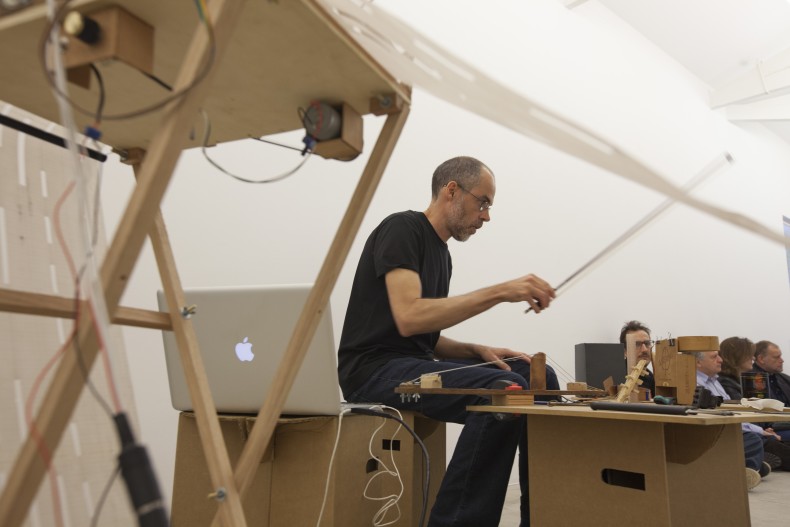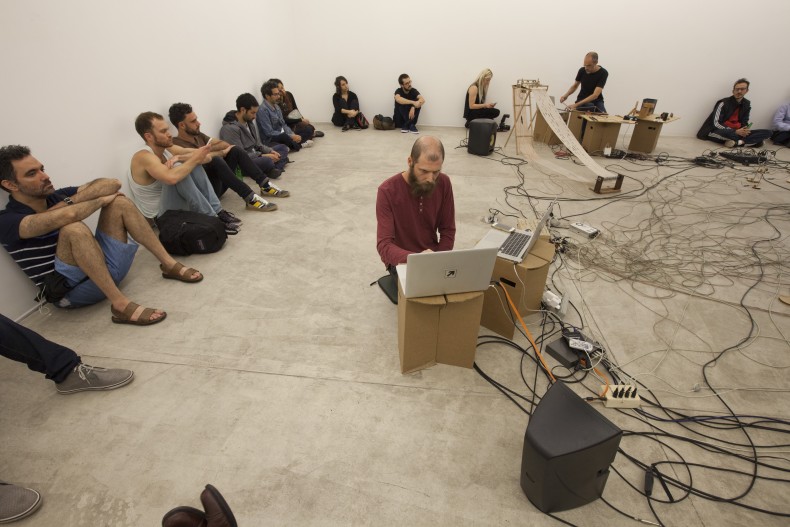At times conflicting and at others harmonious, the relationship between machines and unpredictability takes center stage at Galeria Nara Roesler in a solo exhibition by Minas Gerais-based duo O Grivo, consisting of Nelson Soares and Marcos Moreira. The show will feature four sound installations, one video and specially created works. The duo will also enact a musical improvisation performance during the exhibition opening.
In the exhibit, a bevy of hybrid sound machines operate both automatically (driven by engines) and by the turning of cranks. The sounds are amplified by contact pickups and converted through filters, effects and synthesizers manipulated in real time. The musicians’ task is to configure and adjust the sound texture, improvising sounds as they manipulate the cranks. Once a certain ambience is established, the traction from the machines is transferred to the engines and the machines start to function in standalone fashion, as the musicians become spectators of their own sound configuration. The artists’ interventions happen again several times throughout the exhibition opening; in between them, the machines take care of the music.
the exhibition
In the duo’s works, mechanical function organized by technology gets subverted by the unpredictability of effects, where acoustics plays a crucial role. The praise of the machine at times collides and at others becomes confused with flirtation with indetermination and the unexpected.
As the duo’s text reads, "the sound pieces shown here dialogue with rhythm in an incisive way. Thus, the (rhythmic) sequences are both set by the machine-triggered movement and by the composition. By observing the rhythmic rules and their combinations, we become free to create sound combinations. This way, who knows, maybe music can emerge from amidst this chain. To a certain extent, we walk the line, which in turn is tied up by several knots."
The plurality of elements used to echo diverse, unexpected sonorities informs a significant portion of the artworks. It is so with Conta Gotas (2013), an installation where several burettes (graduated glass tubes with taps) and glass cylinders produce different sound frequencies as water drops hit the tubes themselves and the liquid or objects they contain.
In Engrenagens (2013), the same sound variation process takes up an entire gallery room with pieces of wood and bamboo, axes, pulleys, drive belts and lines that interact with one another to produce sounds in two different ways: through the friction of metal stems on also metallic surfaces; and through attrition between the pulleys and the wooden structures they support. As the mechanisms that move the parts switch on an off at various speeds, an unpredictable orchestration of sound arises with each new combination.
The technological element is the artificial brain that governs the emission of sound in Máquina de Luz (2013). The duo’s version of a music box (which plays notes as the notches in a rotating cylinder strike metal stripes) consists of light beams that send signals for the computer to emit sound whenever they are interrupted by four slowly spinning gears. This creates four small acoustic-electronic sound pieces that dialogue with notions such as fragmentation, tempo, pulsation, timbre, melody and harmony.
Máquina de Arco also features computer-manipulated sound. The unchanging, continuous sound produced by a violin bow on an acoustic guitar string is processed by the computer and translated through filters, effects and synthesizers every eight minutes. The result, combined with the monotone sound, is propagated via speakers placed throughout the room, raising issues of scale of auditory perception: the “minimal” becomes gigantic with attention, time and the dilation of perception that the interplay with silence creates.
O Grivo’s first-ever video will be screened with a new soundtrack. Titled Retrocesso and originally made approximately 15 years ago, it features stills of an old Remington typewriter. Close-up shots gradually create visual games that are at times geometrical and at others symbolical, through different perspectives of media control symbols, including the rewind sign. The film already dealt with topics the duo holds dear.
premieres
One of the artworks specially created for the exhibit at Galeria Nara Roesler is Quatro Discos. According to the duo, the idea of music box-like repetition of a sound sequence is at play once again here. However, unlike those high-precision artifacts, the parts in Quatro Discos were handcrafted in a domestic workshop, and as such bear the marks of imperfection left by the human hand in building them. "And yet this was the hand that shaped the machine. It’s worth noting that despite all imprecisions, the piece is precise when it comes to repeating the sequence. The imperfections repeat themselves with laser-sharp precision in the machine-like motion of the disc”, Marcos Moreira defines.
Máquina Desenho, the second piece set to premiere at the exhibition, is composed of two large cylinders built from thin planks of cedar, a video camera, a projection and speakers. Two notation systems are printed on oppositely-rotating wood cylinders: the first one contains dots and the second one, lines. These systems are read in real time by the video camera and interpreted as music notation. The first one activates sounds and rhythm patterns from a library of staccato sounds (short-duration sounds whose most basic graphic representation is the dot). The second one controls musical parameters like intensity and filters applied to the staccato sounds (reverberation, delay, frequency filter etc.). The designs printed on the cylinders produce an indeterminate music through a series of possible combinations organized beforehand.
In addition to being interpreted and producing sounds (akin to a music box), the moving designs and the cylinders that bear them are captured in footage and projected in an enlarged scale. This zoom of what takes place in a smaller scale in front of the camera relates to an invitation to listen intently and thoroughly to the sounds and the relationships between them.
Still in Moreira’s words, "coexistence with technologies from different time periods is one of the characteristics of our days. When, in a visit to Berlin, I became enchanted by the old locomotive that still ran full steam alongside state-of-the-art trains, I realized the modern machine was every bit as good as the old one, and both were fascinating. In the art field, where obsolete procedures and objects are reinvented, re-contextualized, re-signified, many artworks shed new light on old tools.”
"An environment of exchange is thus established where past and present often coexist. In an attempt to make the precarious relate to digital media, each rhythmic unit is associated with a different sound. The orchestration and variations of said sounds are developed in musical fashion. The use of randomness in association with musical parameters and sounds causes repetition to reinvent itself with each new moment, morphing into oft-unpredictable textures. A music of uncertain rhythms and digital tones.”



